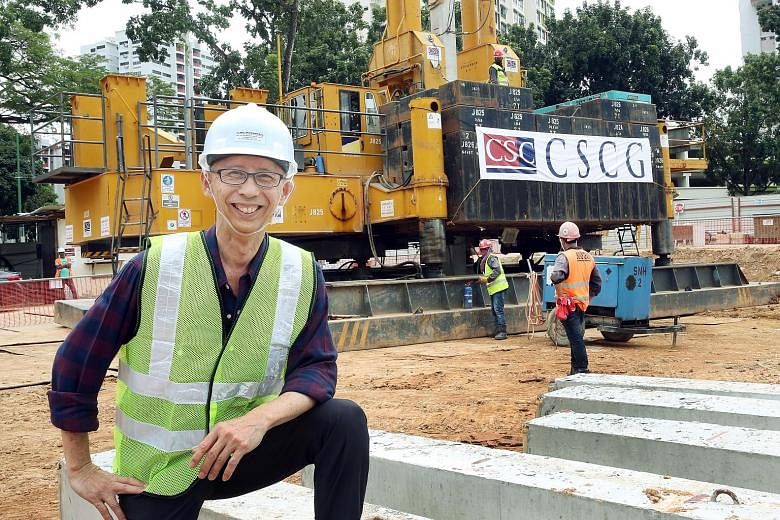Q What is the firm's core business?
A The company started out as a sole proprietor in 1989. It has since grown and now employs 32 staff.
We are in the business of land surveying, serving the construction and building industries. Our clients are mostly piling and building contractors, developers, architects and consultants.
Part of our work involves setting out reference points that indicate piling positions at work sites. These points, which are marked out according to various coordinates, guide the construction of new buildings.
Q Tell us about the new technology that you have adopted?
A Previously, our surveyors would use conventional surveying techniques to locate and mark the positions of piles at a construction site.
It required a minimum of two workers, carrying at least 10kg of equipment, several hours to complete the job.
We felt that the productivity of the process could be improved through the use of GNSS (Global Navigation Satellite System) technology.
Using the GNSS piling solution that we've developed, each piling position at a construction site can be located and marked out in seconds by just one worker, using handheld equipment weighing less than 2kg.
The GNSS solution is also directly installed onto the piling machines, where they act like an "eye", automatically guiding the machines to the correct piling position.
Q What are the key benefits of using this new technology?
A The technology removes several sources of errors from the old process. Fewer errors mean less remedial work and this translates to the timely completion of a project and cost savings.
Inaccurate piling work can take anything from a couple of weeks to even months to rectify.
The GNSS piling solution enables the supervision and monitoring of the piling work and its progress to be done remotely from anywhere.
Another benefit is that it improves efficiency and cuts down the number of workers needed to do the job by half. Hence, there is an obvious overall improvement in productivity.
I think using new technology also makes the industry seem "cool". Maybe that will attract more locals to join the sector.
Finally, using technology to cut down on labour has the additional advantage that, unlike workers, there is no issue of fatigue. With machines, they can work 24 hours a day, rain or shine - if necessary.
Q How long did it take to invent the machine and what was the investment cost?
A I'd been thinking about this idea for some time, but the technology was not available then for us to develop the solution.
When satellite technology became more widely used, we were able to work with government agencies A*Star (Agency for Science, Technology and Research) and the Singapore Land Authority to get the project going.
Under A*Star's Technology for Enterprise Capability Upgrading initiative, a senior scientist was seconded to the firm for over 21/2 years to help us develop the solution.
The whole development process took about three years and cost about $250,000.
However, our journey of innovation does not stop here. Our final goal is for this technology to be adopted as an industry standard for checking pile positions before piling work starts.
Q How do you plan to grow your business in the next few years?
A Currently, all our projects are in Singapore. There is certainly an intention to expand overseas. We believe this technology can be exported to the region and throughout the world. However, we would like to build up a fuller showcase of projects here first before we embark to new markets. With good references here, overseas sales should be easy.
Within this year, with govern- ment support, we should be able to get something moving.
Q Why is innovation important for the construction industry?
A I think our construction industry here is actually behind times, compared with other developed countries. Part of the reason was that we were able to get cheap foreign labour for a long time, so there was no incentive for firms to adopt new technologies. The foreign worker policies have since been tightened.
At this moment, the construction industry is also in a bad shape, in that there are fewer jobs.
Many companies are more concerned about their survival than implementing new technology that will impact their cash flow.
However, we need to know that if we don't move forward with new technology and improve our operational procedures, we will be out. Others will overtake us and push us out of the market.


